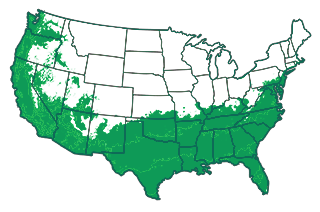About
The Brown Turkey Fig is a tree known for its adaptability and delicious fruit.How tall does a Brown Turkey Fig tree grow?
Brown Turkey Fig trees typically reach a height of 10-20 feet at maturity, making them manageable for most gardens. Their compact size allows easy harvesting without the need for extensive equipment. With proper care, some trees can achieve greater heights, especially in ideal growing conditions.How long does a Brown Turkey Fig tree live?
A well-cared-for Brown Turkey Fig tree can live for several decades, often reaching 50 years or more. Their longevity depends on factors such as local climate, care practices, and pest prevention. Regular maintenance and optimal growing conditions will contribute significantly to the tree's lifespan.How fast do Brown Turkey Fig trees grow?
Brown Turkey Fig trees are moderate growers, typically adding 12-24 inches in height annually under optimal conditions. Growth rate can vary based on factors such as soil quality, watering practices, and overall care. Pruning and feeding schedules also impact the tree's growth rate and productivity.How to care for Brown Turkey Fig trees?
Providing consistent care for Brown Turkey Fig trees involves regular watering, especially during dry spells, and applying mulch to conserve moisture. Fertilize in early spring with a balanced fertilizer to support healthy growth and fruit production. Monitor for pests and diseases, taking prompt action to remedy any issues. Regular pruning encourages a strong structure and facilitates easier harvesting.When to prune Brown Turkey Fig trees?
The best time to prune Brown Turkey Fig trees is in late winter, while the tree is still dormant. This timing helps minimize stress and promotes strong growth during the active growing season. Avoid pruning during hot summer months as it may expose the tree to sunburn.How to prune Brown Turkey Fig trees?
Start by removing any dead, damaged, or crossing branches to encourage healthy growth and airflow. Shape the tree by trimming back overgrown branches to maintain the desired size and form, ensuring good sunlight penetration throughout the canopy. Sterilize your tools before and after to prevent the spread of diseases.Why do we like Brown Turkey Fig?
We love Brown Turkey Figs for their adaptability and delicious, flavorful fruits that enhance any meal. Their ease of growth and low maintenance requirements make them an excellent choice for gardeners of all levels.| Mature Size | 10–20 ft tall × 10–15 ft wide |
| Sunlight | Full (6-8 hours) |
| Spacing | 10–15 ft |
| Harvest Season | June to September |
| Pollination | Self-pollinating |
| Uses | Fresh eating, preserves, baking |
| Water Requirements | Moderate; moist, well-drained soil |

Growing Zone: 7-10
Select a planting site that receives full sun for most of the day and ensure the soil is well-drained to prevent waterlogging. Dig a hole twice as wide and as deep as the root ball, gently placing the tree in the hole. Fill with soil, water thoroughly to remove air pockets, and then mulch to retain moisture.
The ideal time to plant Brown Turkey Fig trees is during late winter or early spring when the tree is dormant. This timing allows the root system to establish before the growing season begins. Avoid planting during extreme heat or cold periods to protect young trees from stress.
When planting multiple Brown Turkey Fig trees, space them 10-15 feet apart to allow for adequate airflow and room for growth. This spacing ensures each tree receives sufficient sunlight and nutrients without competing with its neighbors. Proper spacing also facilitates easier maintenance and harvesting.












